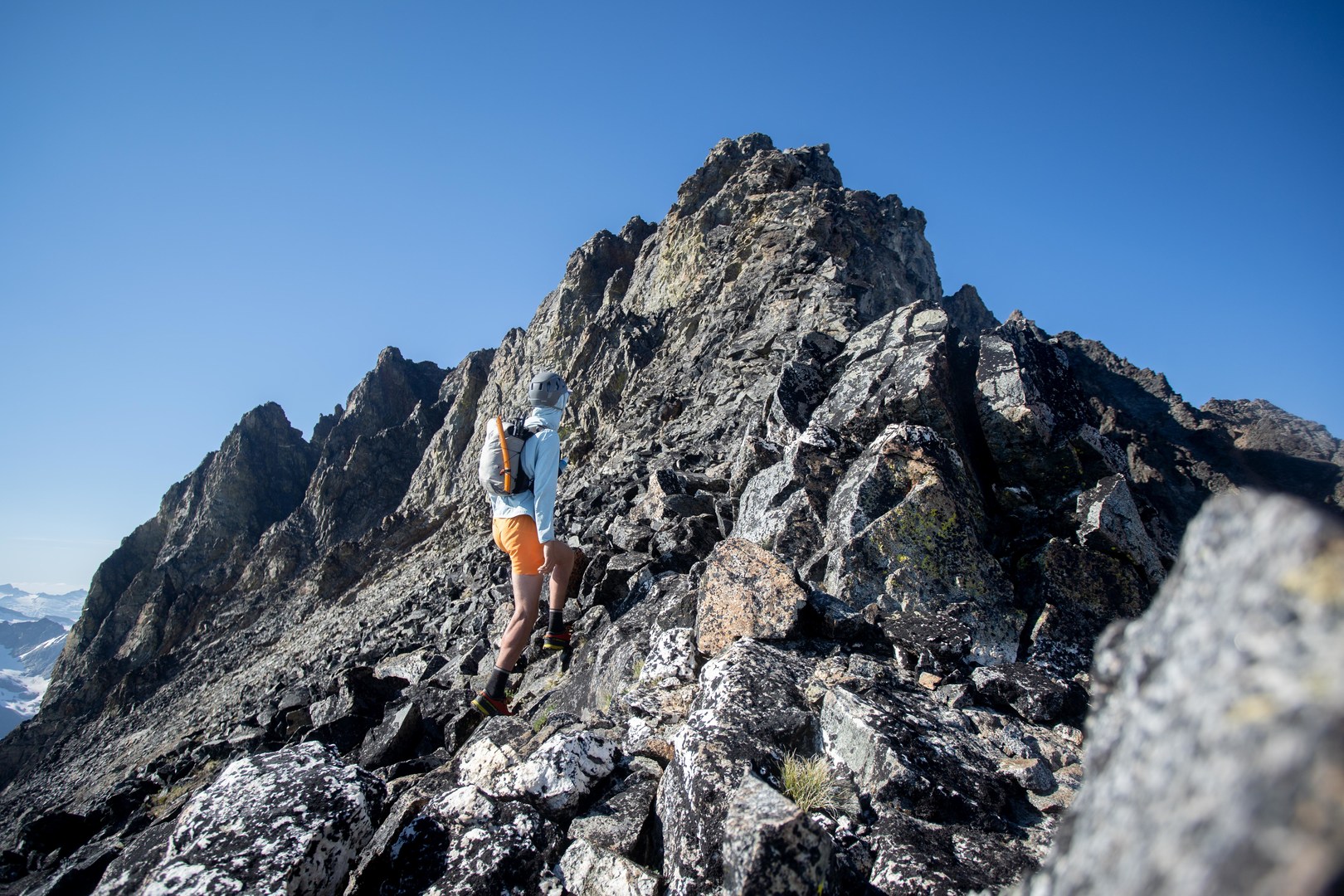You are here
Everyone talks about the volcanoes of Washington State, and the high non-volcanic peaks don’t get mentioned anywhere near as much, even though they’re often gnarly and remote adventures that are well worth the visit.
There are ten non-volcanic peaks over 9000’ in WA, and three of the easiest are right next to one another deep in the Glacier Peak Wilderness: Fernow, Seven Fingered Jack, and Maude.
Fernow is the toughest of the three, and is actually the 7th highest peak in Washington, standing at 9,249’. This peak is remote and tricky, requiring climbers to navigate thousands of feet of loose rock. However, it’s worth the hard work, with gorgeous views of Bonanza (another 9000-er) as well as Glacier Peak. If you’re breaking into tougher scrambles and bigger days, Fernow should be on your list. But be careful - you should feel comfortable traveling off-trail on third and fourth class terrain before tackling this remote route.
A disclaimer on this description and track - this off-trail line was traveled on a single day with certain conditions. The route described is a reasonable way to move through this terrain, and the description below mentions some of the hazards found during the trip. However, conditions may be significantly different when you visit this area. The advice in this trip report is not meant to be followed perfectly - you will need to adapt the route for the conditions you find and for your party’s abilities.
The Basics
-
Seasonality/Snow: Fernow does require some travel on permanent snowfields, but will generally be dry enough for dry travel from mid-July to early October. If you're comfortable on snow, you can start tagging it as soon as the road opens up (or earlier if you're a real crusher).
-
Route Add-ons:
-
You can also add on Seven Fingered Jack and Mount Maude as they’re all along the same ridgeline, though it’d be a huge day on some pretty loose rock.
-
-
Number of Days: You can do this as one big day, though most will do it in two or three days and tag other summits as well.
-
Navigation: Bring a map and/or a GPS, it can get a bit tricky out there.
-
Gear:
-
Good gear for scrambling and moving fast in the mountains.
-
Consider an ice axe and traction (microspikes/crampons) if it’s still early season.
-
-
The Drive: Warning - the final few miles of road up to the Phelps Creek Trailhead can get really rutted out. You can probably drive it in a Subaru, but you’ll feel more comfortable in a higher clearance vehicle.
A Note on LNT
While Fernow is rugged and requires a ton of work to reach, the entire Phelps Creek Drainage gets a lot of travel. If you're contemplating Fernow, you have a lot of backcountry experience. Make sure you're modeling proper LNT behavior for newer backcountry visitors. Clean up after yourself and be a steward. Help others understand why these wild spaces are so special to you and do what you can to protect them, especially from off-trail travel, which can be destructive if done carelessly.
The Trip
To Leroy Basin
Once you’ve made it up the road to the trailhead, head in along the beautiful Phelps Creek Trail. The trail gradually climbs through beautiful forests for 3.5 miles before crossing Leroy Creek. Immediately after the creek, you’ll cut right, heading straight up a steep trail that climbs 2k’ in ~1.5 miles. As you climb, you’ll start getting views of Seven Fingered Jack (7FJ), though Fernow will stay hidden behind the peaks.
Finally, you’ll reach Leroy Basin, a beautiful meadow. Set up camp if you’re doing an overnight, otherwise keep trucking.
Climbing Fernow
Head almost straight north from Leroy Basin. There is no trail, so pick your way carefully up alongside the waterfalls. The route is steep, and you’ll want to trend north-northeast to a 7750’ ridgeline straight up valley from Leroy Creek. Once you reach this ridgeline, you’ll be fully in the alpine and you’ll finally be able to see Fernow.
Head straight west, looking for a cairns that lead down a steep descent north to a saddle at 7,500’. To the west is a beautiful unnamed lake. You’ll descend northeast into the Big Creek drainage, traveling north across a permanent snowfield. At roughly 6,700’, you’ll climb to a small basin before cutting up endless low-angle slabs covered in loose scree. When in doubt, stay left.
This is a long grind of a climb. At 8,300’, you’ll begin entering a basin. Continue up the snow and talus to the top of the valley before cutting northeast again. Climb up loose rock toward an obvious keyhole rock. Pass beneath it and cross to the southeast side of Fernow. From here, follow the path of least resistance up third and fourth class rock to the summit. Enjoy the summit views before gearing up for the extremely long descent.
Logistics + Planning
Current Weather: Powered by Dark Sky
























Comments
Sign In and share them.